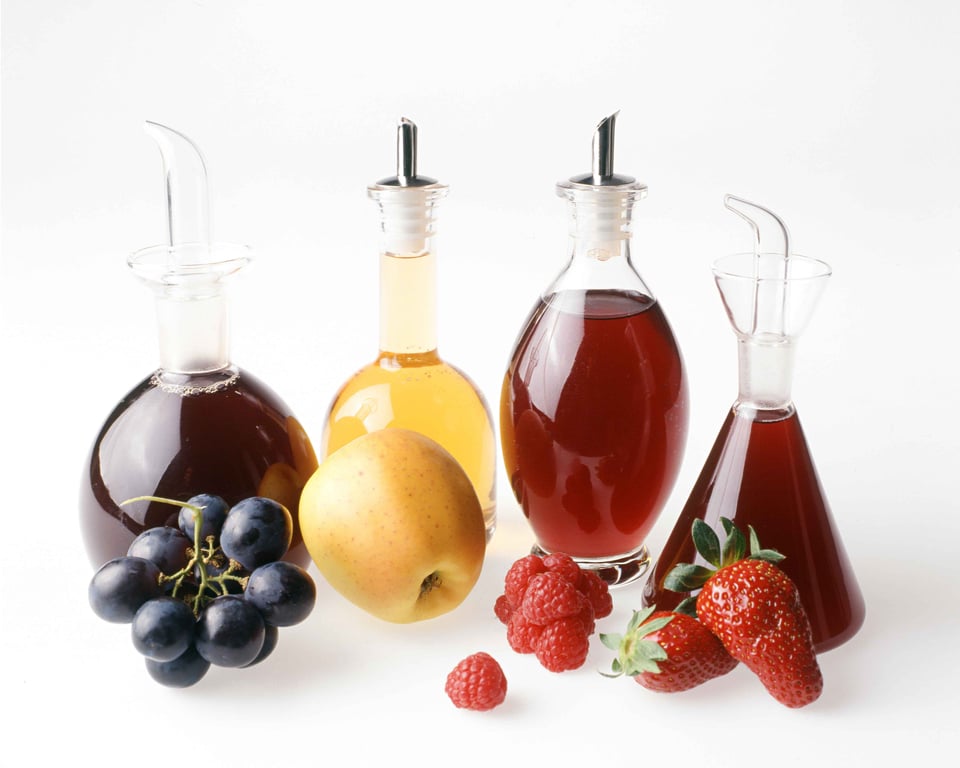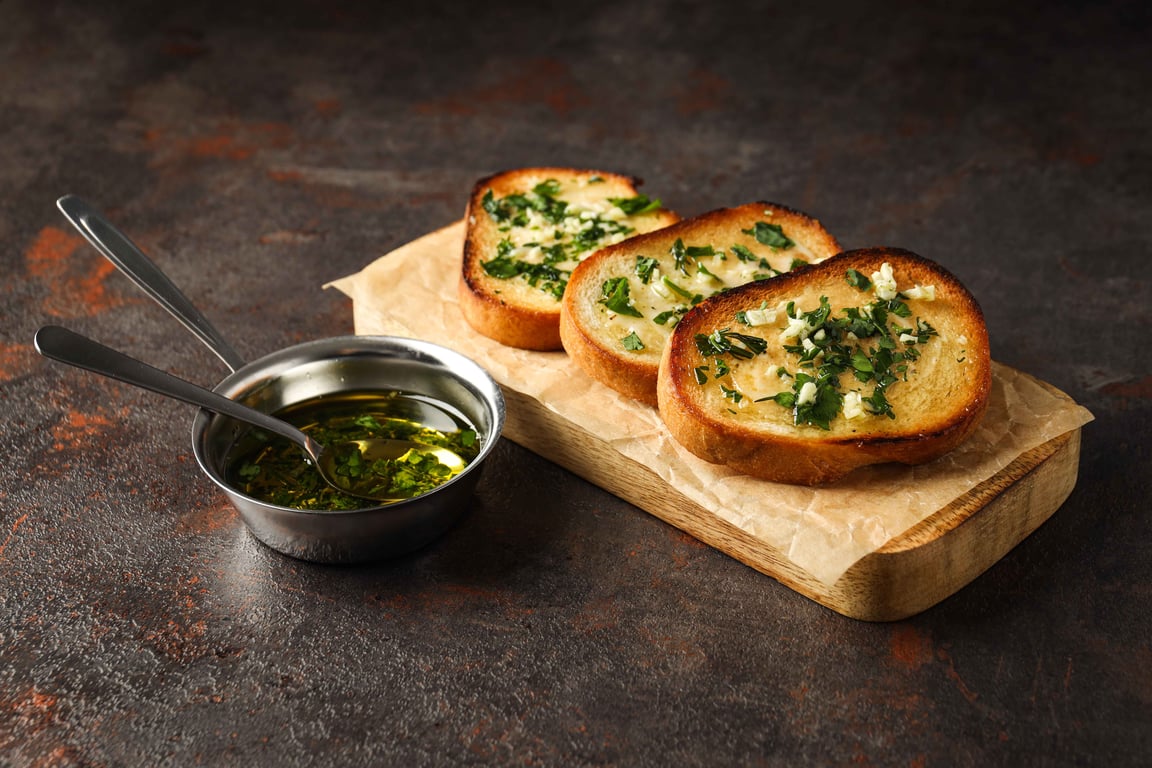Taste Your Way Through a World of Olive Oil Varieties

Olive oil is one of the oldest and most universally beloved ingredients across cuisines. Originating in the Mediterranean, different kinds of olive oil have been produced for millennia in countries like Italy, Spain, Greece, and Morocco. Olive oil uses stems from its versatility—it can be used for cooking, drizzling, marinating, and more.
As a healthy fat rich in antioxidants, the health benefits of olive oil extend past culinary experiences to a more nutritional value. With such a range of flavors and applications, it's no wonder that it continues to be a foundational ingredient worldwide.
In addition to traditional producers, New World regions like California, South America, and Australia are also gaining recognition for their high-quality olive oils, often with bolder and more intense flavors than Old World varieties. Exploring oils from diverse origins showcases how different kinds of olive oil eloquently captures the essence of local terrain.
Factors Influencing Olive Oil Diversity
The incredible variety of olive oils is due to various factors. Some olive cultivars yield oils with mild, delicate notes, while others produce oils with strong, pungent undertones. Timing, extraction methods, and filtration can further refine or alter an oil's profile.
Factors like olive ripeness, water content, and time from orchard to mill have a pronounced impact. Harvesting and processing techniques make a difference, too. Early harvest olives often result in greener, more bitter oils, while later harvests produce mellower, sweeter flavors.
Olive Oil Flavor Profiles
The flavor variations found in olive oil make it an exciting ingredient to cook with. It's also a wonderful way to bring bold, regional flavors to your kitchen.
Classifying Olive Oil Intensities
Olive oil intensity can range from subtle and buttery to bold and peppery. A fresh Tuscan oil may have vibrant fruity tones, while a Spanish variety is more rounded with undertones of nuts and herbs.
One can also experience many flavors in a single bottle, from fresh-cut grass and green tomatoes to exotic spices and cocoa. Creating a tasting journal to record impressions of oils tried allows you to better identify subtle distinctions between them.
Pairing Foods with Different Kinds of Olive Oils
Pairing foods with olive oil enhances and complements many dishes. Delicate, mild oils nicely accompany lighter fare like salads, vegetables, and mild white fish. For heartier dishes like beef, game, or rich stews, a robust, fruity oil matches their intensity.
Even with sweets, olive oil can provide contrast. A favorite dessert calls for drizzling California extra virgin olive oil over a chocolate torte. The oil complements the chocolate’s decadence with bright grassy notes and a smooth texture. Olive oil can add richness and subtle fruitiness to ice cream when used as an ingredient in the custard base before churning. It works well with flavors like vanilla, lemon, hazelnut, or honey.
Infused olive oils are a trendy ingredient. Infusing oils with organic herbs, citrus, or spices offers dozens of pairing possibilities.
A little knowledge of olive oil's uses around the world can provide a better understanding of food pairings and the oils themselves.
Cultural Connections: Olive Oil in Global Cuisines
Olive oil beautifully expresses culture and cuisine across the Mediterranean and beyond:
- Italian cooking embraces regional oils. The robust flavor of Tuscan olive oil pairs perfectly with hearty pasta dishes, while the milder Ligurian oil complements seafood.
- Spanish cuisine draws on bold, hearty oils for paella and tapas. Smoky, peppery Spanish olive oils stand up to chorizo, shrimp, and saffron in classic paella recipes.
- The Middle East and North Africa use olive oil in hummus, stews, and flatbreads. Olive oil forms the velvety base of hummus and complements slow-cooked Moroccan tagines and fluffy pita bread.
- Greece vaunts fruity, green oils on salads and cheeses. Bright, grassy Greek olive oils highlight fresh vegetables and creamy feta cheese.
- California olive oils offer exceptional quality due to the state’s Mediterranean climate, which provides the ideal growing conditions for olive trees. Minimal processing ensures California olive oils retain their fruity, grassy flavor. Plus, the California Olive Oil Council's rigorous standards ensure that every bottle of olive oil bearing the council's Seal of Certification is fresh, flavorful, and produced with the highest integrity.
Now that we know what goes into the best olive oils around the world, you may be wondering where you can find the best extra virgin olive oil on the market.
Go on a Culinary Adventure with Big Paw Olive Oil
Who knew there were so many wonderful olive oil varieties from around the world? From olive oil uses in salads and sauces to its myriad cooking applications, including desserts, there are endless ways to incorporate olive oil into your cooking routine.
Big Paw Olive Oil Company offers a range of California extra virgin olive oils to keep on hand for everyday and special occasion cooking.
Our quality olive oils are perfect for sampling yourself and sharing with friends.
Check out our gift ideas and seasonal specials!
Frequently Asked Questions
Q. What are the different types of olive oil?
A. There are five main types of olive oil:
- Extra virgin: unrefined, high quality, full flavored.
- Virgin: unrefined, lower acidity, mild flavor.
- Refined: neutral flavored, high smoke point.
- Pure: blended refined and virgin oils.
- Pomace: heavily processed from olive pulp.
Q. What is the significance of extra virgin olive oil?
A. The best extra virgin olive oil is the highest quality olive oil and has the richest flavor from the first cold pressing of olives.
Q. How does olives' region or origin affect olive oil's flavor?
A. Olive oil flavor varies significantly from region to region based on olive variety, regional climate, soil conditions, and harvest time.
Q. What health benefits are associated with olive oil?
A. Olive oil provides heart-healthy fats and powerful antioxidants that may help reduce inflammation, lower cholesterol, and improve blood pressure.
Q. How should I store olive oil to ensure its quality and shelf life?
A. Store olive oil in a cool, dark place to prevent rancidity—refrigerate after opening to extend shelf life.


 Fax : 1-973-799-0901
Fax : 1-973-799-0901 Call us now: +1 408-464-9048
Call us now: +1 408-464-9048





